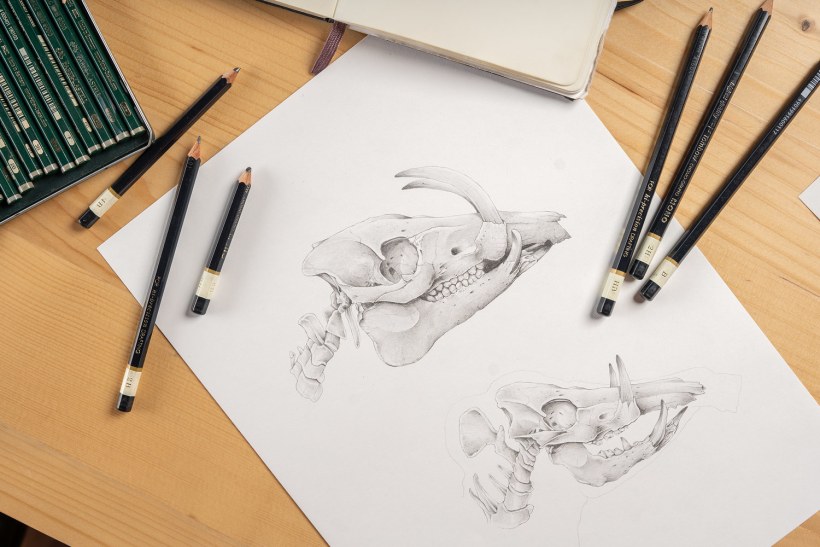How to preserve pencil drawings
Table of Contents
Table of Contents
If you’re an artist, or just someone who likes to keep drawings as a memento, you know how important it is to preserve them. However, preserving paper drawings can be a daunting task, and you may wonder where to start or how to do it properly. In this article, we’ll explore the best tips and tricks for preserving paper drawings.
The Pain Points of Preserving Paper Drawings
Preserving paper drawings can be challenging because paper is vulnerable to a variety of threats. Over time, paper can become brittle, yellow, or faded. Additionally, paper can be damaged by moisture, light, and insects. Preserving paper drawings can be particularly challenging if they were created with delicate materials, such as charcoal or chalk, or if they are particularly old or valuable.
How to Preserve Paper Drawings
The best way to preserve paper drawings is to store them in a cool, dry, and dark place. Avoid storing them in basements or attics, as these areas are prone to moisture and temperature fluctuations. Acid-free storage boxes or folders are also recommended, as acidic paper will deteriorate over time. Additionally, it’s best to avoid handling the drawings too often, as oil and dirt from your fingers can damage the paper.
Summary of Key Points
To summarize, preserving paper drawings involves storing them in a dry and cool place, using acid-free storage boxes or folders, and minimizing handling to avoid damage. Additionally, it’s important to keep them out of direct sunlight or bright light, as this can cause fading and yellowing over time.
Preservation Techniques for Different Types of Paper Drawings
Some paper drawings may require additional preservation techniques, depending on the materials used and the age of the drawing. For example, pencil drawings can be fixed with a spray fixative to prevent smudging or fading. Charcoal drawings should be sprayed with fixative or stored behind glass to avoid smudging. Watercolor and ink drawings can be treated with a fixative or varnish to prevent fading or bleeding. However, before using any preservation techniques, it’s best to consult with a professional conservator to ensure that the method is appropriate for the drawing in question.
Using a Professional for Preservation
If you have valuable or particularly delicate paper drawings, it may be best to consult with a professional conservator. Conservators are trained in the techniques and materials necessary to preserve artwork, and they can assess the condition of your drawings and recommend a preservation plan. Although using a professional conservator can be more costly than preserving your drawings on your own, it may be worth the investment to ensure that your drawings are properly preserved for years to come.
Maintaining Preservation Over Time
Once you’ve stored your paper drawings properly, it’s important to maintain the preservation over time. This means regularly inspecting the drawings for signs of damage or deterioration and making any necessary adjustments to the storage conditions. Additionally, if you need to transport your drawings, be sure to do so with care, using flat storage boxes or folders to avoid bending or creasing the paper.
Conclusion of How to Preserve Paper Drawings
Preserving paper drawings may seem daunting, but with proper storage techniques and preservation methods, you can ensure that your drawings stand the test of time. Remember to keep drawings in a cool, dry, and dark place, use acid-free storage boxes or folders, and avoid excessive handling to prevent damage. Additionally, consider consulting with a professional conservator for valuable or delicate drawings, and maintain the preservation over time by regularly inspecting and making necessary adjustments.
Question and Answer Section
1. Can I store my paper drawings in a plastic storage container?
It’s best to avoid storing paper drawings in plastic storage containers, as plastic can trap moisture and cause the paper to deteriorate over time. Acid-free storage boxes or folders are recommended instead.
2. Can I use hairspray as a fixative for my pencil drawings?
Although some artists use hairspray as a fixative for pencil drawings, it’s not recommended, as hairspray is not an acid-free material and can cause the paper to deteriorate over time. Spray fixative made specifically for artwork is a better option.
3. How often should I inspect my paper drawings for signs of damage?
It’s a good idea to inspect your paper drawings every six months to a year for signs of damage or deterioration. This will help you catch any issues early on and make any necessary adjustments to the storage conditions.
4. How can I transport my paper drawings safely?
When transporting paper drawings, use flat storage boxes or folders, and avoid folding or creasing the paper. If you’re transporting drawings by mail or shipping, place them between two pieces of cardboard and wrap them securely to prevent bending or damage during transit.
Gallery
Nancy Tart : Drawings

Photo Credit by: bing.com /
How To Preserve Pencil Drawings | Pencil Drawings, Pencil Drawings Easy

Photo Credit by: bing.com / preserve
How To Preserve Chalkboard Drawings | Chalk Writing, Chalkboard

Photo Credit by: bing.com / littleredwindow
How To Preserve Pencil Drawings And Illustrations | Domestika

Photo Credit by: bing.com / preserve domestika
How To Preserve Our Little Ones’ Drawings With Image Transferring In

Photo Credit by: bing.com / deserres






